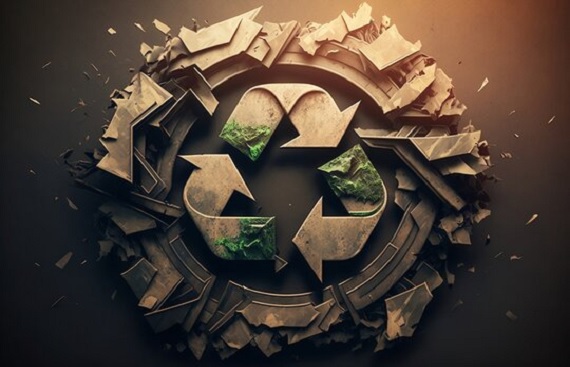From Trash to Treasure: Innovative Technologies in E-waste Recycling

The rapid advancement of technology in our digital age has led to a major problem - the issue of electronic waste, or e-waste. From smartphones to computers, countless discarded electronic devices are polluting the environment and posing health risks. As our reliance on electronic gadgets grows, tackling this problem is becoming increasingly urgent. This article explores the world of e-waste recycling, examining a range of innovative technologies that have the potential to convert this waste into a valuable resource. From cutting-edge processes to clever solutions, we'll take a closer look at the promising initiatives that turn trash into treasure and bring us one step closer to a more sustainable and environmentally friendly future.
The Current State of E-waste Recycling
With electronic devices becoming obsolete at an alarming rate, the need for effective e-waste recycling has never been more urgent. While traditional methods have helped to some extent, they need help to handle the complex and varied nature of electronic components. The present scenario of e-waste recycling is fraught with challenges such as inefficient processes, environmental risks, and the loss of precious resources during disposal. As the number of discarded electronic devices continues to rise, it is crucial to address these shortcomings to strike a balance between technological progress and environmental protection. A reassessment and improvement of recycling strategies are essential to minimize the adverse effects of electronic waste on our planet and explore the untapped potential of these discarded technologies.
"The harmful materials contained in electronics products, coupled with the fast rate at which we're replacing outdated units, pose a real danger to human health", says, Dr. Abhijit Sarkar, Country Head-Corporate Real Estate, Administration & Infrastructure, Sharekhan.
Innovative Technologies Transforming E-waste Recycling
![]()
The way we recycle electronic waste is changing dramatically with the help of innovative technologies. New sorting systems and state-of-the-art recovery processes are leading the way, revolutionizing traditional methods and providing new solutions to the challenges posed by e-waste. Nanotechnology, artificial intelligence (AI), and biotechnology are key to transforming the recycling paradigm. AI-powered automated systems and advanced sorting technologies are making e-waste recycling processes more efficient. Additionally, innovative chemical and biological processes are reducing environmental impact, promoting a more sustainable approach to material recovery. Furthermore, blockchain technology, modular designs, urban mining techniques, Extended Producer Responsibility (EPR) programs, and smart logistics systems all promote sustainability in e-waste management. These innovative strategies are a significant step towards a more eco-friendly future, where electronic waste is no longer abandoned but transformed into a valuable resource.
From Waste to Resource: Recovering Rare Earth Elements
Electronic waste contains a valuable reservoir of rare earth elements that are essential for high-tech manufacturing. Innovative techniques such as solvent extraction and ion exchange are emerging as key players in recovering these critical elements from electronic devices. These advanced methods facilitate the efficient extraction of rare earth elements from e-waste, which addresses environmental concerns and turns what was once considered discarded material into a valuable resource. By incorporating these recovered elements into the production of new electronic devices, the paradigm shifts from waste management to resource recovery, marking a crucial stride toward sustainable and circular technological practices.
Renewable Energy Solutions in E-waste Recycling
The proper handling of e-waste is crucial to reduce its environmental impact. To achieve this, recycling facilities are adopting sustainable practices, such as using renewable energy sources. For instance, solar panels are powering processing plants, which is a clean and eco-friendly way to recycle electronic waste. Additionally, wind turbines are being employed to generate electricity for sorting facilities, further reducing the industry's carbon footprint. This shift towards renewable energy sources benefits the environment and demonstrates a commitment to environmental stewardship. By embracing these sustainable practices, the e-waste recycling industry is taking a significant step towards a more eco-friendly approach to managing electronic waste.
Economic Opportunities and Job Creation
![]()
Innovative e-waste recycling technologies promote environmental sustainability and create economic opportunities and jobs. The recycling industry's increasing demand for skilled workers has led to training programs and more employment opportunities. This positive economic impact is essential for cultivating a circular economy emphasizing resource maximization and waste minimization. By investing in and supporting the growth of the e-waste recycling sector, societies can harness the dual benefits of environmental preservation and economic development. This fosters a symbiotic relationship between technological advancement and job creation, paving the way for a sustainable future.
Future Outlook and Trends
Looking into the future of e-waste recycling, there is reason for optimism as research and development initiatives continue to refine current technologies and explore new approaches. There is an increasing focus on circular economy principles, which leads to the design of more easily recycled electronics, promoting a sustainable lifecycle for electronic devices. The integration of artificial intelligence and robotics is also expected to revolutionize e-waste recycling processes, making them more efficient and accurate. As these trends gain momentum, the future of e-waste management looks promising, offering a glimpse into a future where technological innovation aligns seamlessly with environmental stewardship, promoting a more sustainable and responsible approach to the lifecycle of electronic products.
Conclusion
In the transition from waste to resource, innovative technologies are revolutionizing e-waste recycling. These advancements, whether through circuit board recovery or rare earth element extraction, not only help alleviate environmental burdens but also create avenues for economic growth. A future where electronic devices are designed for recyclability is envisioned, marking a paradigm shift toward sustainability and resource conservation. This transformative journey showcases human ingenuity at its best, where the right technologies mitigate the adverse impact of e-waste and turn it into a valuable resource for future generations. As we stand at the intersection of technology and environmental stewardship, the progress made in e-waste recycling highlights the potential for a future where waste is redefined and our innovations work harmoniously to preserve our planet's resources.
